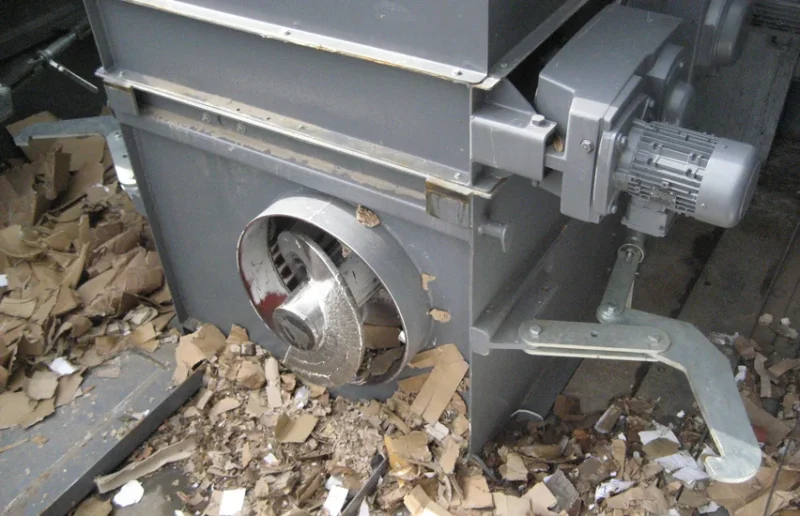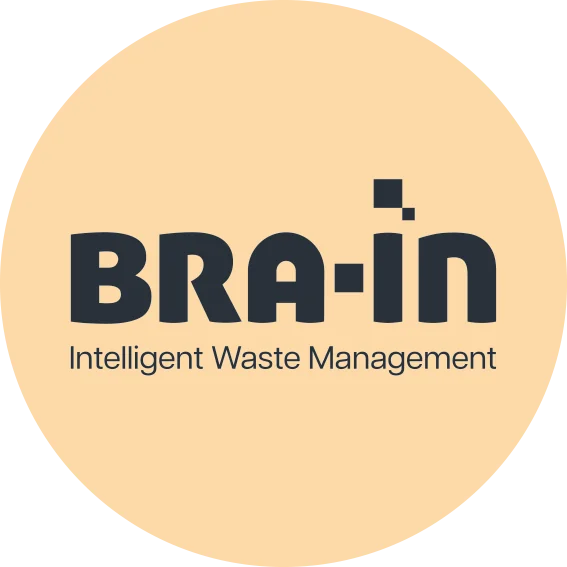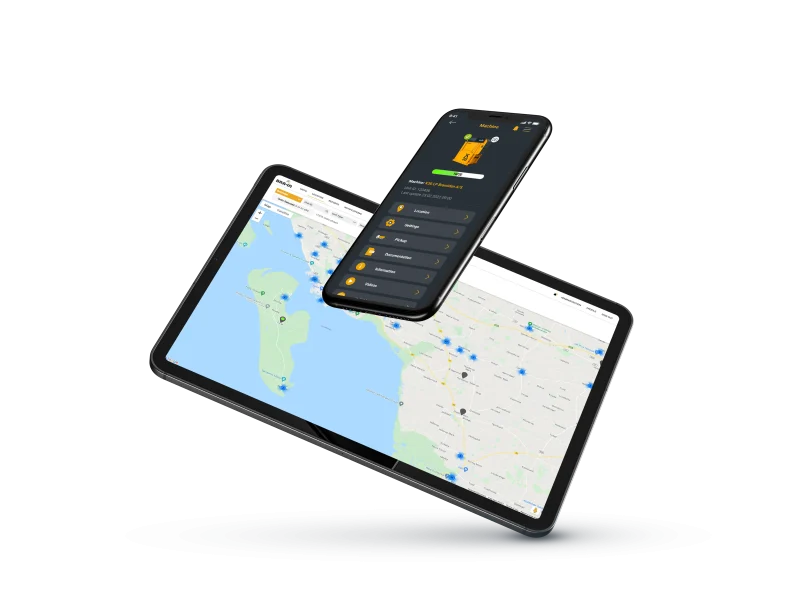What’s the difference between a static compactor and a mobile compactor?
In short, the difference between a static compactor and a mobile compactor is whether the press unit stays on-site or if it is attached to and follows the container.
Static compactor
A static compactor is designed to stay on-site. The press unit and the container unit are separate units and the press unit is bolted to a concrete base.
The container is attached to the press unit by ratchets. When the container is full, it is picked up for emptying and a replacement container is put into position on the press unit.
The static compactors are very well suited to handle very large amounts of waste and in situations where the is a need for constant filling.
Mobile compactor
In a mobile compactor, the press unit is integrated with the container. This means that the entire unit is picked up for emptying when it is full.
The mobile compactor is often slightly smaller and have less capacity than a static compactor, because it must be easy to pick up and transport on a truck.
The mobile compactor is suitable for applications where space is confined. They can handle a wide range of waste materials including cardboard, paper, plastic, combustible waste or organic waste.
Why should I choose a mobile compactor?
With a mobile compactor, structural changes to the site are not necessary. You simply connect the system to the local power supply and it is ready to use.
This makes the mobile compactor a flexible solution that can be integrated into any environment – even for a limited time period.
What happens to the waste after it has been compacted?
After the waste has been compacted, it is stored in the adjoining container. When the container is full, it is picked up by your waste collector and emptied before it is reattached.
Can I have my compactor in another colour?
Yes, you can. All our compactors are available in standard RAL-colours. They are painted with a durable lead and chromate free paint.
Furthermore, their large smooth surfaces offer plenty of room for a company logo.
Do I need a baler or a compactor?
What type of waste handling equipment you need depends on different factors: How much waste you gather on a daily basis, but also the type and size of it. You also have to consider how much space you have for a waste solution.
This information, combined with your company’s structure and internal work processes, forms the basis for which tailored waste solution is the perfect fit for you and your company.
Our sales consultants can help you with the right decision.
How do I operate a compactor?
A compactor is very easy to use. You load your waste into the machine and, depending on your solution, press the start button to run a press cycle or wait for the press cycle to start automatically.
What’s the difference between a static compactor and a mobile compactor?
The difference between a static compactor and a mobile compactor is whether the press unit stays on-site or if it is attached to the container.
A static compactor consists of two separate units – the press unit and the container unit. The press unit is bolted to a concrete base and stays on on-site.
In a mobile compactor, the press unit is integrated with the container. This means that both the container and the press unit is picked up for emptying.
How do I know if I need a static compactor or a mobile compactor?
Whether you need a static compactor or a mobile compactor depends on a number of factors. What you need to consider is how much waste you have, what kind of waste material you have, your internal work processes, how much space you have for a compactor solution, and if the solution should be integrated in an existing facility.
What type of waste material can I put in a compactor?
That depends on the compactor. As a rule of thumb, you can use a compactor to compact all soft materials. Examples of soft materials include cardboard, shredded paper, news paper, paper bags, soft dry plastic, and PET bottles.
There are also compactors for wet waste, polystyrene, EPS, and wood.
We always recommend that you consult with us if you wish to use your compactor for any other materials than the listed and recommended materials.
Is a compactor safe to operate?
A compactor is very safe to operate. All our compactors are thoroughly tested to ensure that they meet the highest safety standards. Furthermore, all mechanical and electrical parts are placed inside the machine –out of reach for users. The control panel is placed on the outside of the machine and gives the user easy access to start the machine. An emergency stop is also placed on the control panel within fast and easy reach.
What kind of preparations do I need to do before installing my static or screw compactor?
Before installing your static or screw compactors you need to prepare some structural or site adaptions.
The compactor must be installed on a solid, leveled ground. The press unit must be properly installed by being bolted to the ground, which must be concrete or pavement, or by being bolted to the building.
You also need to lay out guiding rails in the floor to make sure the container unit is positioned correctly on the press unit. Finally, you need to make sure that you have the correct electrical connection in place.
Our experienced team of consultants can help you clarify what you need to take into account and what you need to prepare to get the best start with your compactor.
I worry about safety and access to my machine – can I prevent unauthorized people access?
Yes, you can. If your compactor will be placed in a place with public access, you can prevent unauthorized people from using it with a digital auto lock. The lock prevents people from throwing waste into the compactor and running a press cycle.
The lock can be controlled with a pin code or a key tag. This way, only you and the people you give the pin code or a key tag to can use the compactor.
A digital auto lock can be a good idea if many people have access to the compactor, if the compactor is unattended, or if people have access to the compactor during all hours of the day.
Can I use a compactor for organic waste?
Yes, we offer special mobile compactors for organic waste, e.g., waste from foods. Organic waste can leave obnoxious smells or leak through the door.
Our PHR and PSR mobile compactors are specially designed to compact organic, moist, or commercial waste that is similar to household waste.
The press plate in these compactors is self-cleaning to counter smells and the door is sealed to prevent splashing and leaking.
Why should I drain my waste?
You achieve several advantages by draining your waste. First, wet waste is very heavy. Draining it means that you reduce the weight, density and mass. As a result, you can use smaller compactors and fewer and smaller containers to store your waste in. Ultimately, this means a reduction in the number of waste pick-ups.
Second, wet waste is difficult to process by incineration. Incineration is the process of burning waste to recover energy. Wet waste weakens the burning process and the energy is not released as well if the waste is dry. Therefore, some governments even prohibit wet, moist and undrained waste in incineration facilities.
What is a waste compactor?
A waste compactor, is, as the name suggests, a machine that compacts waste. They are large and heavy-duty machines that can take mixed waste in large quantities – several tons at a time – and compress them into a smaller and more contained amounts.
The compactor consists of a press unit and a container unit. The press unit compacts the waste horizontally into the container. When the compactor is full, it is picked up by a waste collector. Depending on the material, it is then transported to a recycling station or an incineration facility.
Compactors are available in a range of sizes and varieties depending on the type of material and the amount and volume of waste the machine will be processing.
Can I install my compactor outside?
Yes, you can install your compactor outside. Our compactors are designed to withstand any kind of weather. Their robust fully welded steel construction prevents formation of rust. Furthermore, they are treated with a high quality and durable paint to prevent flakey paint and rust. All mechanical and electrical parts are protected from wear and tear inside the machine.
Did you find an answer to your questions? If not visit our FAQ universe.











